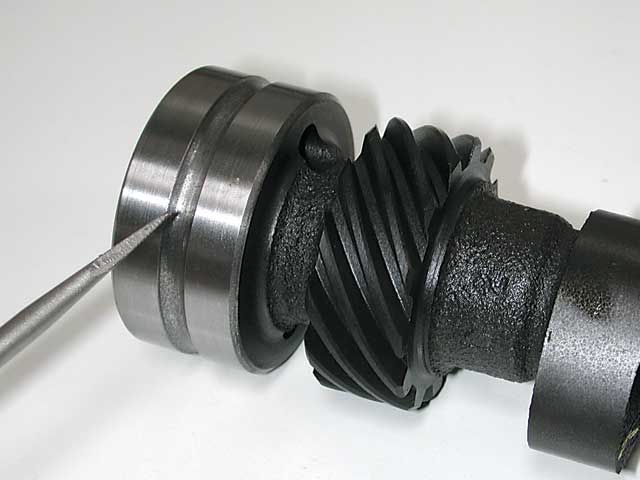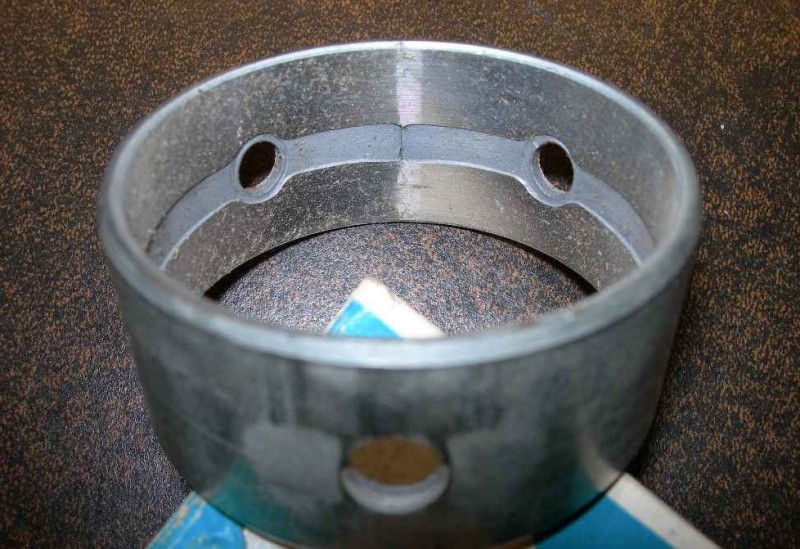Hi, just posting a question about an oil pressure loss I am having trouble figuring out. I have a '77 350 small block that I have just rebuilt. It had new pistons, rings, all bearings including cam bearings which the machine shop put in, new Crow cam, lifters, new standard volume oil pump, timing chain set. Basically everything. When it was started up everything seemed fine with OK oil pressure. Once it is warm the pressure drops to 10 PSI or less at idle. At revs it seems OK. I put a calibrated gauge on to make sure the reading was correct.
I pulled the engine out again and checked all the bearing clearances. 1.5 " on the big ends and 1.5 to 2" on the mains apart from the rear which was 3" so no real problems there. I decided to pressurise the oil system with air to see if that would show up a problem. I blanked the oil pump outlet and installed a pressure supply to the oil pressure gauge fitting. I found air escaping at a great volume from the holes in the rear cam journal. I assume these holes are to let oil from the rear side of the bearing return to the sump and not build up pressure that would blow the rear cam gallery plug out? I plugged these up tightly with some paper towel and the leakage stopped. Well, a little bit from the mains and big ends as these were not torqued up, but otherwise normal. The cam bearing is the narrow style and appears to be in the right position.
What I can't figure out is how the air (oil) can possibly get to the back of this cam journal so it can then escape via the holes in a high volume. I measured the journal size and the bearing diameter and it is very close, although it is hard to get a good bore gauge reading. The only thing I haven't done yet is remove the rear cam gallery plug to check from the rear of the motor.
Does any one have any ideas on what I could look at next???? I really am a bit confused now.
I pulled the engine out again and checked all the bearing clearances. 1.5 " on the big ends and 1.5 to 2" on the mains apart from the rear which was 3" so no real problems there. I decided to pressurise the oil system with air to see if that would show up a problem. I blanked the oil pump outlet and installed a pressure supply to the oil pressure gauge fitting. I found air escaping at a great volume from the holes in the rear cam journal. I assume these holes are to let oil from the rear side of the bearing return to the sump and not build up pressure that would blow the rear cam gallery plug out? I plugged these up tightly with some paper towel and the leakage stopped. Well, a little bit from the mains and big ends as these were not torqued up, but otherwise normal. The cam bearing is the narrow style and appears to be in the right position.
What I can't figure out is how the air (oil) can possibly get to the back of this cam journal so it can then escape via the holes in a high volume. I measured the journal size and the bearing diameter and it is very close, although it is hard to get a good bore gauge reading. The only thing I haven't done yet is remove the rear cam gallery plug to check from the rear of the motor.
Does any one have any ideas on what I could look at next???? I really am a bit confused now.


